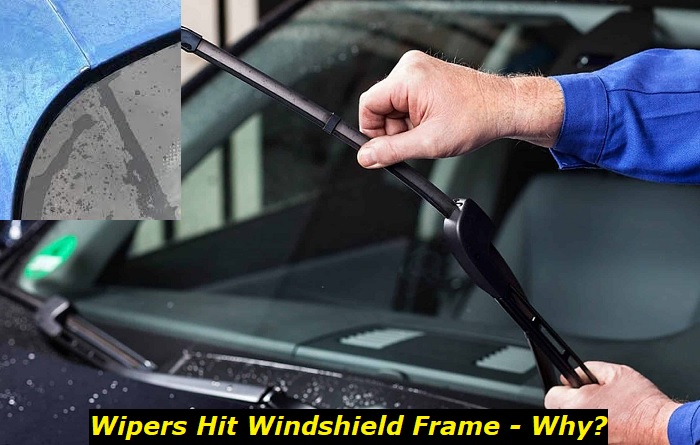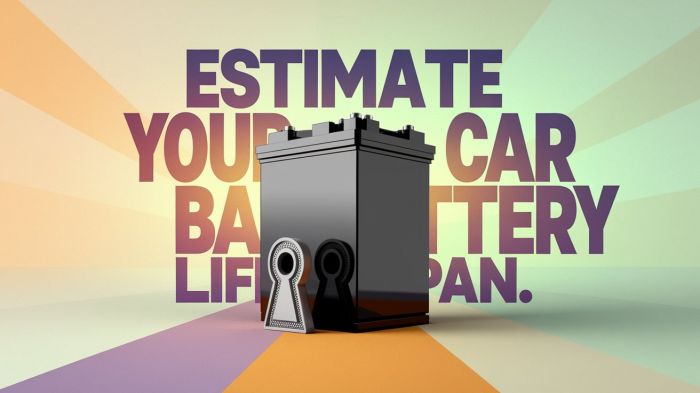A properly functioning wiper is essential for a safe and reliable driving experience. A malfunctioning wiper can cause visibility issues, which can lead to decreased safety on the road. Additionally, if you have heavy rain or snow, or dirt and dust build up on your windshield, it could obstruct your view of the road.
Having a working wiper will help clear away any debris that may get in your line of vision while driving. Furthermore, when visibility becomes poor during bad weather conditions, having a working wiper will help you stay focused and keep an eye out for potential hazards on the road.

Most Common Causes of the Windshield Wipers Hitting the Windshield Frame
Having a properly functioning wiper system is paramount to ensuring maximum safety while driving. Therefore, any signs of malfunction in this part should be fixed without further delay to get you ready in times of low-visibility conditions due to various environmental factors.
When looking for a solution to a problem, it's important to know where it's coming from at first. Having an idea where to look for its source can surely save you a lot of money by preventing unnecessary repairs without really tackling the cause of the issue head-on.
So, when diagnosing this issue with the wiper, among the things that you should keep a look out for are the following:
- Worn Grooves in the Wiper Arm and Wiper Linkage
- Broken Bushings in the Wiper Linkage Mechanism
- Loose Nut Holding the Wiper Arm
- Damaged Ball-and-Socket Joints in Wiper Rods
Fixing the Wipers Hitting the Windshield Frame
When your wipers start hitting the windshield frame, it's often a sign of more problems coming your way such as damage in the wiper motor if prolonged, in addition to the potential hazards it could bring to you, your passengers, bystanders, and other vehicles.
1. Worn Grooves in the Wiper Arm and Wiper Linkage
Worn grooves in the wiper arm and wiper linkage are usually caused by excessive wear and tear over time. In some cases, this may be due to a design flaw that allows for too much friction or tension between the components, resulting in premature wear of the wiper system. This can cause the wipers to hit the windshield frame when activated, leading to further damage.
To diagnose whether worn grooves are causing your wipers to hit the windshield frame, start with a manual examination of both the arms and linkage. If there is a visible indentation where it has been rubbing against each other, then this could be an indication of an underlying issue related to wear or design. You can also use special tools like feeler gauges or calipers to measure the depth of the grooves to get a more precise assessment as to whether or not they are still within your automaker's acceptable quality.
If you find that worn grooves in the wiper arm and linkage have caused your wipers to hit the windshield frame, then the best solution is to replace any parts that are compromised. If not addressed promptly, these issues can cause further damage to other components such as the wiper motor, linkages, arms, and even the glass itself.
Fortunately, replacing these parts is a relatively simple procedure with standard tools, as long as you use genuine replacement parts specifically designed for your vehicle model. It's important to note that using generic aftermarket parts may not fit properly or function correctly. Therefore, it is always recommended to consult a qualified mechanic if you are unsure.
If necessary, you may also need to adjust the wiper arms and linkage after replacing the worn components to ensure that the wipers are sitting at a suitable position on the windshield so they don't hit against the frame again.
2. Broken Bushings in the Wiper Linkage Mechanism
Broken bushings in the wiper linkage mechanism are most often caused by wear and tear over time due to regular use, temperature changes that can cause expansion and contraction of metal parts, and corrosion. It is important to check for broken bushings if you experience issues with your wipers not moving correctly or hitting the windshield frame.
To get an idea of what could be the cause of this problem, start by using a visual inspection to look for any signs of damage such as cracks or frayed edges in rubber components, loose screws, and other physical damage. You can also do a manual check to test the movement of the wipers by activating them with a switch.
If they don't move as expected then further troubleshooting is required. Using a mechanic's tools such as a multimeter or voltage tester can help to identify problems with electrical connections and the wiring.
Once you have identified that broken bushings are causing your wiper problems, the solution is to replace them. Before replacing any parts, it is important to make sure that all other components in the system are in good condition and functioning properly. It is best to source new bushings instead of used ones since they may not fit correctly or be of poor quality.
When installing new bushings, make sure to clean all the connection points before securing them in place and testing the wipers one final time for proper operation. If done correctly, this should fix any issues with your windshield wipers hitting the glass frame of your auto.
3. Loose Nut Holding the Wiper Arm
A loose nut holding the wiper arm is one more common cause of wipers hitting the windshield frame. This issue can be identified by the typical symptoms, such as clunking noises or jerky movements when using the wipers, as well as a manual check-up.
To assess the cause of this problem, it is important to check for any loose nuts and bolts that may need tightening. If none appears to be loose, try manually moving each wiper blade and arm one at a time to observe any irregularities in movement. Moreover, an automotive scanner tool can be used to detect any underlying issues with wiring or control modules that may be contributing to irregular wiper blade motion.
To fix this problem, you may have to replace the wiper arm or the nut that holds it in place. It is also important to check for any other parts that may have worn down or become loose, such as the wiper linkage, bushings, and washers. If these components are damaged or worn out, they should be replaced with new ones to ensure the proper functioning of the wipers. In some cases, replacing the entire assembly may be needed.
Finally, it is always recommended to follow the manufacturer's instructions for installation and testing when replacing any parts on your vehicle.
4. Damaged Ball-and-Socket Joints in Wiper Rods
Damaged ball-and-socket joints in wiper rods can be caused by several factors. One of the most common causes is wear and tear due to constant use over time. The rubber gasket surrounding the joint will shrink and crack, leading to loose movement in the joint that may cause the wipers to hit the windshield frame.
Other causes include corrosion and dirt buildup due to environmental conditions such as regular exposure to rain or snow, which can eventually lead to degradation of the parts inside the joint if not regularly lubricated or cleaned with an appropriate solution.
To diagnose why a wiper rod has a damaged ball-and-socket joint, it is best practice to first inspect it visually for any signs of damage or wear. Then, manual checks such as extending and retracting the joint can be performed to assess the level of movement and tightness. If these checks are inconclusive, using a voltmeter or other test tool can help pinpoint exactly what is causing the problem.
Once you have identified that a wiper rod has a damaged ball-and-socket joint, it should be replaced with a new part. This may also involve replacing any other parts that have been damaged by the same issue, such as gaskets or any metal components within the joint. It is important to use quality replacement parts to ensure that your wipers will not experience any further problems in the future due to weak or incorrect parts.
Careful attention should also be paid to the installation of the new parts, as improper fitting could lead to further issues down the road.
Damaged ball-and-socket joints in wiper rods can be a tricky problem that requires careful diagnosis and knowledge of the right replacement parts to fix it properly. However, with some careful inspection and understanding of the issue, any competent car mechanic should be able to identify and fix this problem without too much difficulty.
Conclusion
There is no stopping you from operating your vehicle with a malfunctioning wiper. However, this exposes you to risks during low-visibility conditions brought about by the weather and dust particles. Thus, it is your responsibility as a driver and vehicle owner to make sure that it does its job properly to prevent accidents resulting in injury, fatality, and property damage along the way.
About the authors
The CarAraC research team is composed of seasoned auto mechanics and automotive industry professionals, including individuals with advanced degrees and certifications in their field. Our team members boast prestigious credentials, reflecting their extensive knowledge and skills. These qualifications include: IMI: Institute of the Motor Industry, ASE-Certified Master Automobile Technicians; Coventry University, Graduate of MA in Automotive Journalism; Politecnico di Torino, Italy, MS Automotive Engineering; Ss. Cyril and Methodius University in Skopje, Mechanical University in Skopje; TOC Automotive College; DHA Suffa University, Department of Mechanical Engineering






Add comment